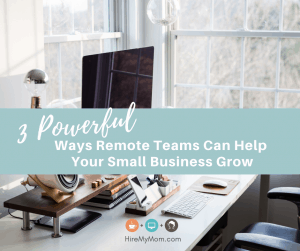Maximizing Your Potential with a Small Business Mentor

Starting and running a small business is no small feat. From creating a business plan to dealing with the financials, there are so many aspects that entrepreneurs need to consider. Fortunately, you don’t have to do it all alone. By leveraging the expertise of a small business mentor, you can maximize your potential and increase your chances of success.
Why Use a Mentor?
- Experience: A good mentor will have years of experience in the business world and will have faced many of the challenges that you are currently dealing with. By tapping into their knowledge and expertise, you can save yourself a lot of time, money, and headaches.
- Objective perspective: As a small business owner, it’s easy to get caught up in the day-to-day details of running your business. However, a mentor can provide an objective perspective and help you see the big picture. This can be incredibly valuable when it comes to making important decisions or pivoting your business strategy.
- Networking opportunities: Mentors can also help connect you with other professionals in your industry or community, providing you with valuable networking opportunities. These connections can open up doors for your business and help you reach new customers, clients, or investors.
- Emotional support: Starting and running a small business can be an emotional rollercoaster, and it’s important to have someone in your corner who understands what you’re going through. A mentor can offer emotional support and encouragement when you need it most, helping you stay motivated and focused on your goals.
Overall, having a mentor can be a game-changer when it comes to running your small business. Whether you’re just starting out or have been in business for years, finding the right mentor can help you reach new heights of success and achieve your full potential.
What to Expect from Your Mentor
When you decide to work with a mentor, it is important to have a clear understanding of what to expect from the relationship. Here are some things you can anticipate when you partner with a small business mentor:
- Guidance and advice: Your mentor will provide you with the knowledge and insights they have gained through their own experiences. They will offer guidance and advice on everything from setting business goals to managing employees.
- Accountability: A mentor can help keep you accountable to your goals and aspirations. They will challenge you to stay focused and motivated, and hold you accountable for the actions you commit to taking.
- A sounding board: Sometimes, you just need someone to bounce ideas off of. Your mentor can serve as a sounding board for your business ideas and help you assess their feasibility and potential.
By working with a small business mentor, you can gain valuable knowledge and insights that can help take your business to the next level. The key is to find the right mentor who aligns with your values and goals, and to make the most of your relationship by being open, receptive, and willing to learn.
Making the Most of Your Relationship
When working with your mentor you should set goals, be open and honest, listen and act on their advice, stay accountable, and show gratitude. Sometimes bringing on a mentor can be difficult, though. Schedules get in the way and finding the time to connect can be tricky. However, there are still options available.
If you want to learn from some of the best experts in the business, you can also check out our self-paced course Hiring Made Easy. Learn what you need to get together before hiring someone, how to handle interviews, how to determine fair pay rates, and more. This is all done on your own time, so it truly works with your schedule. Lesley Pyle, founder of HireMyMom and creator of Hiring Made Easy, has 20+ years of experience as a small business owner and remote worker that she is passing on through this course. It’s a lot like having a business mentor without trying to rearrange your schedule to learn something new. Plus, if you have questions or need a little more support, you can always contact us to get in touch with a real human being who can help!









